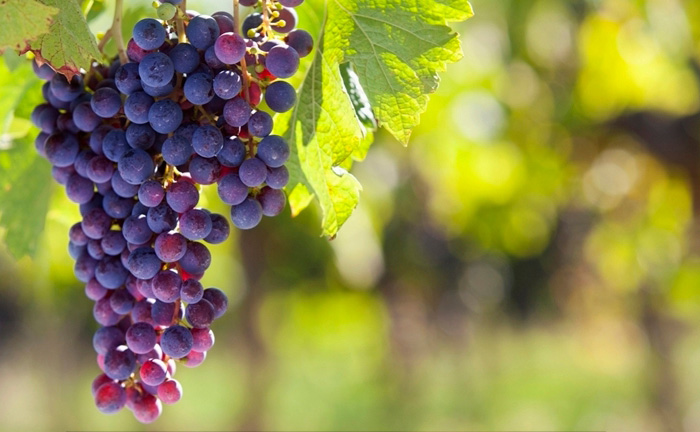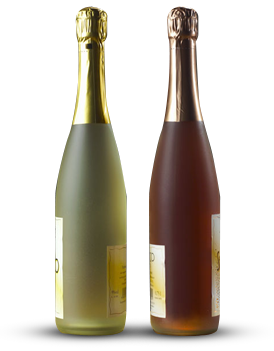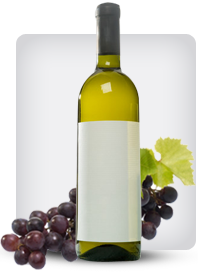

Tag: Wine
I Love Kosher Wine – A New Zealand Sauvignon Blanc
Posted onNew Zealand has become a real success story for wine. Not all that long ago they were making wine from virtually unknown grapes such as Isabella, which isn’t even a member of the wine grape family. Now their signature grape, Sauvignon Blanc, has stole a lot of France’s thunder. New Zealand’s Sauvignon Blanc wines are prized the world over, and are quite distinctive.
The wine reviewed below comes from the South Island wine region of Marlborough, the country’s most famous wine area; one particularly known for its Sauvignon Blancs. Unusual for New Zealand, this wine is Kosher. It has been flash-pasteurized; the technical word is Mevushal, which means that observant Jews consider it to be Kosher, no matter who serves it. Once upon a time Mevushal meant boiled wine, a process virtually destroying its taste and eliminating its use in pagan rituals. The presently used flash pasteurization process is much more gentle. As you’ll see, the wine reviewed is by no means tasteless.
OUR WINE REVIEW POLICY All wines that we taste and review are purchased at the full retail price.
Wine Reviewed
Goose Bay Sauvignon Blanc K/P 2007 13.0% Alcohol About $ 20.00
Let’s start by quoting the marketing materials.
Tasting Note: Pale yellow colored, the nose shows intense aromas of sweet pea pods and passion fruit. Medium to full-bodied, flavorful tropical fruit and gooseberry flavors with pea pod on the finish, which is zesty. Serving Suggestion: Pan-fried fatty white fish with tropical fruit salsa. And now for my review.
The first sips tasted of pea pods. The wine was a bit unctuous. The initial food pairing involved a sweet and sour commercially barbecued chicken breast accompanied by potatoes roasted in chicken fat and a salad (more of a salsa) consisting of tomatoes, tomato puree, sweet pimento, hot peppers, and vegetable oil. I noted a good balance of crisp acidity and sweetness. The acidity intensified somewhat with the roasted potatoes, doing a good job of cleansing the palate. On the other hand the wine was weak when faced with the salad.
The second pairing involved an omelet. The wine’s acidity was crisp and refreshing but I am getting tired of the pea pod taste and smell. The accompanying grape tomatoes removed the offending taste but there wasn’t all that much flavor left.
The final meal centered around meatless lasagna containing tomatoes, peas, cottage cheese, and sliced olives topped with mozzarella cheese. The wine finally succeeded in shaking off the pea pods and displayed bright acidity but not a lot of fruit. I finished with a light cheesecake with a graham cracker crust. I think it may have been the sugar that brought back the pea pods.
I finished with the cheese pairings. With a Provolone there was something in the background, probably grapefruit. Then I went to an Emmenthaler (Swiss) but even with this high-quality, flavorful (nutty) cheese the familiar, undesired taste came back.
Final verdict. It doesn’t happen often but one taste managed to ruin everything. Actually, I am not at all sure that even without those pea pods I would buy this wine again. There are so many great New Zealand Sauvignon Blancs. But this is hardly one of them. If you want Kosher wine, there are a lot of other choices in all price ranges. Keep posted. I’ll be reviewing more of them.
Resveratrol and Red Wine Grape Extract Safety
Posted onWhen polyphenols including Resveratrol, Quercetin, and red wine grape extracts are concentrated into a daily tablet equivalent to over 100 Bottles of red wine (400 – 1000 mg) or more, there is one immediate question, is it safe?
Indeed, scientists who study these nutraceutical supplements have and are continuing to use similar scientific research techniques to those used in the pharmaceutical industry to evaluate their potential health benefits and safety.
In 2002, the National Institute of Environmental Health Sciences commissioned a report entitled, “Trans-resveratrol Review of Toxicological Literature.” A review of more than 200 referenced scientific studies were included, and the report stated that there were no reported adverse effects from Resveratrol on humans.
Animal studies have used the human-equivalent of over 1,000 mg (10 mg/kg of bodyweight) of Resveratrol, and have shown no toxic effects. Massive dosage studies were also performed on animals. “The no observed adverse affect level (NOAEL) was 300 mg/kg/day,” which would be a human dosage of 30,000 mg or 10 – 100 times the maximum concentrations contained in human high-concentration oral nutraceutical dosages.
Human studies also confirm the safety of Resveratrol in highly concentrated forms. Studies including those at Marywood University, University of Leicester (UK) and University of Michigan, etc. all found no significant side effects and no evidence of toxicity.
Personally, members of our company have taken 2,000 mg of Resveratrol and red wine grape extracts for extended periods with no side effects.
Many nutraceutical manufacturing plants are certified by the FDA (US Food and Drug Administration), TGA (Australia’s FDA Certification), NSF, USP (US Pharmacopia), etc. (be sure to check company’s websites for such information).
According to Dr. Joseph Maroon, in his recent book, The Longevity Factor, How Resveratrol and Red Wine Activate Genes for a Longer and Healthier Life (page 198) “Having seen both a pharmaceutical manufacturing plant and a dietary supplement facility I am assured that the manufacturing standards are virtually identical.”
High quality Resveratrol supplements have been on the market since the year 2000, and numerous patients, companies and doctors have reported their safety.
NOTE: Of course, any side-effects experienced as a result of taking Resveratrol, Quercetin, red wine grape extracts, or any other nutraceutical supplements should be reported to the manufacturer, and to your doctor.
Wine Preserver
Posted onDon’t you hate when you open a bottle of wine and have to leave it unfinished?
Because if you don’t finish it, the wine’s going to get stale. When you come back a few days later to pour a glass, the aroma and flavor have eroded. The wine doesn’t taste like it did when you first opened the bottle, and the best you can do with it is add it to spaghetti sauce.
Thank heavens they’ve invented wine preserver!
You see, when a bottle of wine is opened oxygen begins to decay the wine. Exposure to air deteriorates the wine’s color, fragrance and flavor. The principle behind wine preservers is to remove the oxygen, keeping the original wine characteristics intact as though the cork had never been removed.
There are a few different types of preservers available today, ranging in price from $ 7 to about $ 900.
The simplest one is a can of inert, non-toxic gas (the company doesn’t specify, but most likely it’s argon gas) that you squirt into the wine bottle while slipping the cork back in. The gas replaces the oxygen in the bottle, keeping the wine from spoiling.
This product, marketed as Private Preserve Wine Preserver, promises to give about 120 uses from one .60 ounce can. This preserver lists at $ 11.95 per can, although you may be able to find it online at about $ 7.
Another simple wine preserver is basically a vacuum that sucks the oxygen out of the wine bottle. Some offer bottle stoppers of different sizes in order to fit most wine bottles. Two popular models are Vintage Vac and V-Gauge Wine Vacuum, and they retail between $ 20 and $ 40.
A more complicated wine preserver is the Wine Saver PRO Preserve & Serve Wine System. This preserver allows five wine bottles to be simultaneously preserved with the argon gas canister located under the counter. Promotional materials state that this system will preserve opened wine for weeks, primed and ready to pour through their dispensing spigots. This model retails for about $ 900. It is designed primarily for bars, restaurants and hotels, or for the home wine cellar.
All of these products have received favorable reviews, indicating they do a good job at preserving the freshness of opened wine for days and even weeks at a time.
Find More Zinfandel Wine Articles
Red Wine Refrigerator – Why You Need One
Posted onMost people don’t think to chill their red wine. Unfortunately, that means they aren’t getting the best out of the bottles they buy. When you invest in a good bottle of red wine, it makes sense to treat it with respect and ensure that it can mature correctly, which is only possible in optimum conditions.
Originally, red wine would have been kept in a wine cellar. These underground chambers were perfect for making sure the wine stayed at just the right temperature, no refrigeration needed! These days, very few people actually have a wine cellar, though part of your basement could potentially be converted into one. The solution? A red wine refrigerator.
Regular Fridges Just Don’t Cut It
Why can’t you just pop your tinted wine into your kitchen fridge? There are a number of reasons this is NOT a good idea.
First of all, the kitchen refrigerator is not meant for wine. It’s too cold. While the wine needs to be cool, it should not be refrigerated at any temperature lower than 50 degrees F. The average kitchen fridge ranges from 35-38 degrees, which is far too low for your red wine. A wine bottle refrigerator can be set to just the right temperature, ensuring the best quality wine possible.
Another consideration is vibration. Regular fridges have pretty strong vibrations, but if you know anything about wine, you know it matures best when left unmolested and allowed to sit for long periods of time. The vibrations in a regular fridge is very disruptive to this process, so you need a way to cool the bottles without shaking them up at all. Red wine refrigerators do this very nicely, since they have built-in anti vibration mechanisms that keep the bottles chilled and undisturbed.
When choosing a cooler for your bottles, you’ll find that it is very important to look for one that fits the space you have. There are fridges that only hold 6 bottles for those of you who don’t need a lot of space and plenty of larger sizes, as well. Built-ins work very well for those who have a full collection.
You need a red wine refrigerator if you are serious about your collection of alcoholic beverages. Otherwise, the bottles you own are not being kept at the right temperature and this affects the quality of the wine.
Related Red Wine Articles
Drink Wine Properly
Posted onWine drinking is one of the favourite pastimes of many Australians. It is indeed a common sight to see an Australian family sitting together in the evening, with the kids playing in front of the fireplace while Mum and Dad enjoy a nice glass of wine. Most often it is red wine with some crackers and cheese. The regular wine drinker would swear by the fact that this, by far, is the most relaxing and enjoyable evening, and the subtle alcohol in the wine helps them relax more. In fact wine drinking, at all times of the day is fast gaining popularity the world over.
Wine is not a drink like beer that you pour into a glass and gulp or drink straight from the can. It is a very dignified drink that calls for manners and dignity while drinking. It also calls for some easy to follow procedures that should be remembered should you or a family member be very fond of drinking wine.
The first amongst these procedures is having the wine at the right temperature. The old adage of having chilled white wines and red wines at room temperature does not work anymore. Room temperatures can mean anything and having white wines chilled is wrong as well. The ideal temperature for having a white wine should be an approximate 11.7 degrees Fahrenheit while for a red wine is around 17 degrees Fahrenheit. It is said that old and matured white wines should be allowed a period of time before they are taken and should be taken out of the chiller at least 15 minutes prior to service. Specialised wine chillers are also available in the market, which cool the wine to precise temperatures.
Another thing to remember is that wine is not beer. It is not meant to be slugged and gulped. It is a dignified drink that is meant to be sipped slowly and enjoyed. You should spend time savouring the aroma that the wine exudes and the colour and texture of the wine itself. Enjoy the wine with every sip and use all your taste buds to taste and enjoy the Australian wine. One glass of Australian wine can last a very long time if it is leisurely sipped and slowly enjoyed.
Last but not the least; wine must be drunk in a special wine glass. It cannot be just poured into any glass or tumbler or be had from a pitcher, the way beer is enjoyed. Wine must be had in a specialised wine glass like the burgundy glass or the Bordeaux glass or such, that allows for the wine to be twirled around and champagne, yet another form of wine must be enjoyed in a champagne tulip, a glass that allows you to savour the colour of the champagne, relish the aroma, keep the bubbles in place and yet allow you to have an enjoyable drink!
Find More Malbec Wine Articles
popular posts
-

Aging Potential of Premium Pinot Noir: Unlocking the Elegance of Time Among the world’s noble grape varieties, Pinot Noir holds a unique and almost mythical status
12-30 2025Celebrated for its ethereal aromatics, silky texture, and captivating expression of *terroir*, it is often considered the most transparent conduit from vineyard to glass. Read More
-

Food Pairing with Full-Bodied Cabernet Sauvignon Few wines command a table with the authority of a full-bodied Cabernet Sauvignon
12-29 2025With its deep, inky color and powerful structure built on robust tannins, dark fruit flavors, and often a hint of oak, it’s a wine Read More

